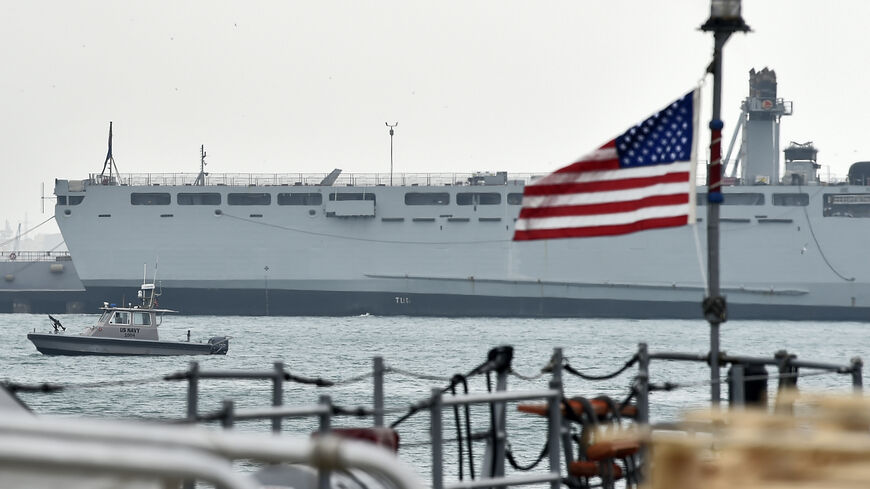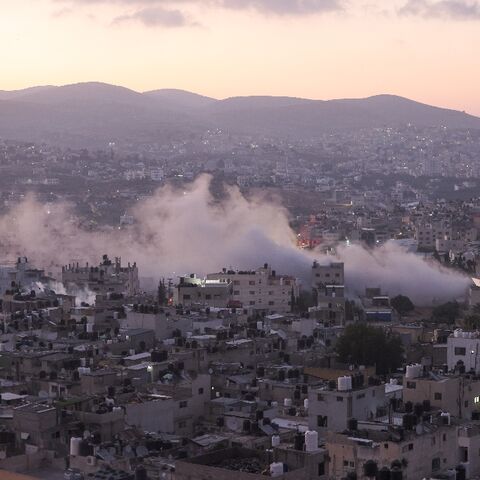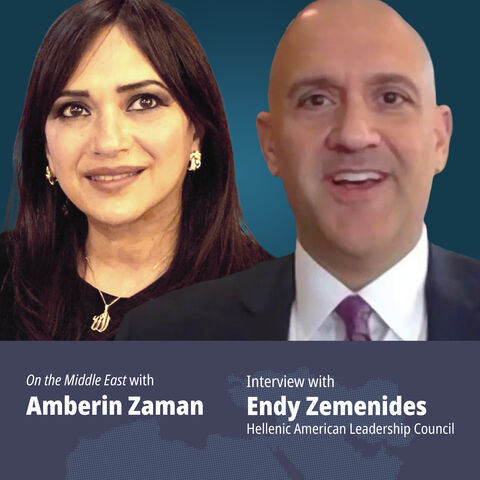The US Navy and its Middle Eastern and European allies have ramped up naval and air patrols in and around the Strait of Hormuz following a spate of civilian tanker seizures by Iran.
The US Navy’s Fifth Fleet commander Vice Adm. Brad Cooper spoke with commercial shipping industry representatives via teleconference from Bahrain on Wednesday to assure them of the increased security measures.
To get the full Security Briefing newsletter in your inbox every week, subscribe here.
The precautions came in response to at least two recent Iranian seizures of commercial ships. One of those was in retaliation for a US Justice Department seizure of another tanker carrying Iranian fuel to China, as Al-Monitor previously reported.
The European-led naval coalition in the region is taking a lead role in the allied show of force, and US defense officials tell me no new American assets have deployed into the region for the increased patrols.
The United States has fewer naval assets in the region than just a few years ago. Last September, Fifth Fleet commander Cooper said there was just one P8 Poseidon aircraft in-theatre.
“To increase force flow in this key strategic choke point, you don’t have to send a bunch of assets,” one US military official told me. “You can just rotate them through more frequently.”
Washington has leaned on its European allies to deploy major naval assets to the Middle East in recent years as the Pentagon has shifted focus to deterring China.
The commander of France’s naval forces in the Indian Ocean, Vice Adm. Emmanuel Slaars, met with Oman’s armed forces chief Rear Adm. Abdullah bin Khamees al-Raisi on Tuesday after speaking with Fifth Fleet commander Cooper by phone on Saturday.
An Italian destroyer arrived in the Gulf region on Thursday following a French frigate last week.
France stood up the European Maritime Awareness in the Strait of Hormuz (EMASOH) mission in 2019 as a parallel force to US-led missions, amid concerns in European capitals that the Trump administration’s approach to deterring Iran was too escalatory.
In contrast to the Trump era, the Biden administration has had notable success, growing the International Maritime Security Construct (IMSC), stood up in response to Iranian attacks in 2019, from six to nine member nations and coordinating closely with EMASOH.
The United States has also deployed a cruise-missile submarine to the Gulf region and extended an aircraft carrier's stay to the eastern Med in recent months, as the Pentagon practices flexible deployments designed to be less predictable to Iran’s top brass.
The Biden administration has leaned into a “deterrence by detection” approach to Iran’s clandestine activities.
The Islamic Republic prefers to operate with deniability, suggesting more eyes-on in the Strait may reduce the chance of future seizures and potentially drone attacks on Israel-linked shipping, which Iran appears to episodically carry out in retaliation for Israeli covert actions.
The boosted security also could suggest there may be additional US seizures of Iranian petroleum shipments in the works. A dozen lawmakers from both parties urged Biden in April to order US seizures of sanctioned Iranian fuel shipments in line with US law.
For its part, Iran’s forces have interfered with 15 commercial merchant vessels over the past two years in Middle Eastern waters, the US Fifth Fleet said.
Meanwhile, Russia’s navy chief visited Tehran on Tuesday to push trilateral cooperation with China.
Those exercises remain flimsy in comparison to the US Fifth Fleet’s biannual International Maritime Exercise, which the United States held for the second year in a row this year in what officials described as a stunning display of combined technical proficiency.








